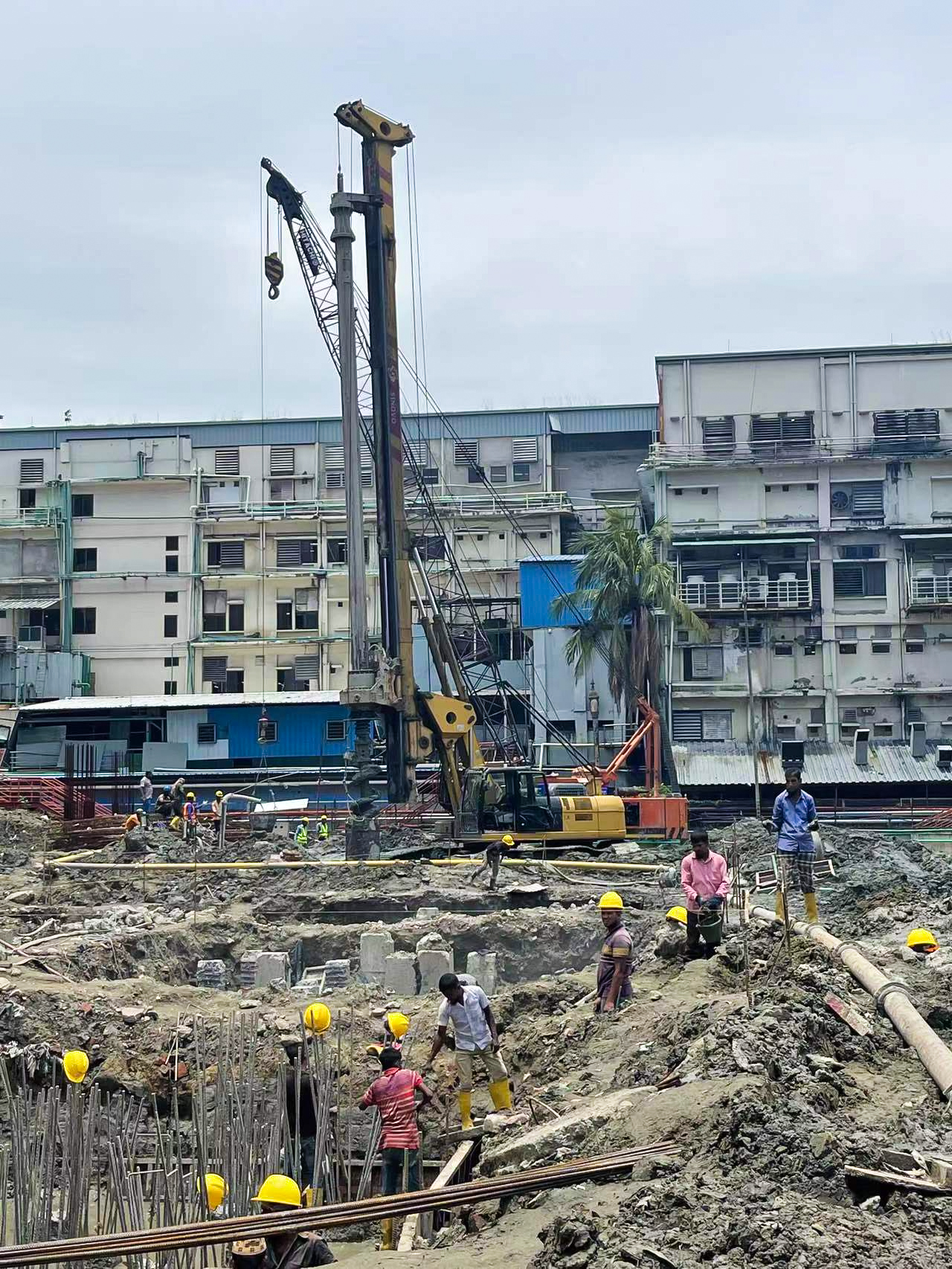1. Quality problems and phenomena
Wall collapse during drilling or after hole formation.
2. Cause analysis
1) Due to the small mud consistency, poor wall protection effect, water leakage; Or the shell is buried shallow, or the surrounding sealing is not dense and there is water leakage; Or the thickness of the clay layer at the bottom of the protection cylinder is insufficient, the water leakage at the bottom of the protection cylinder and other reasons, resulting in insufficient mud head height and reduced pressure on the hole wall.
2) The relative density of the mud is too small, resulting in less pressure of the water head on the hole wall.
3) When drilling in the soft sand layer, the penetration is too fast, the mud wall formation is slow, and the well wall seepage.
4) There is no continuous operation during drilling, and the drilling stop time is long in the middle, and the water head in the hole fails to keep 2m above the water level outside the hole or the groundwater level, reducing the pressure of the water head on the hole wall.
5) Improper operation, bump the hole wall when lifting the drill or lifting the steel cage.
6) There is a large equipment operation near the drilling hole, or there is a temporary walkway, which causes vibration when the vehicle passes.
7) The concrete is not poured in time after hole clearing, and the placement time is too long.
3. Preventive measures
1) In the vicinity of the drilling hole, do not set up temporary through the road, prohibit large equipment operation.
2) When the protection cylinder is buried on land, it should be filled with 50cm thick clay at the bottom, and the clay should also be filled around the protection cylinder, and pay attention to tamping, and the backfill around the protection cylinder should be uniform to ensure the stability of the protection cylinder and prevent the infiltration of ground water.
3) When the water vibration sinks into the protective cylinder, the protective cylinder should be sunk into the mud and permeable layer according to the geological data, and the joint between the protective cylinder should be sealed to prevent water leakage.
4) According to the geological exploration data provided by the design department, according to the different geological conditions, the appropriate mud gravity and mud viscosity should be selected to have different drilling speeds. For example, when drilling in the sand layer, the mud consistency should be increased, better pulping materials should be selected, the viscosity of the mud should be increased to strengthen the wall protection, and the footage speed should be appropriately reduced.
5) When the water level in the flood season or tidal area changes greatly, measures such as raising the protection cylinder, increasing the water head or using a siphon should be taken to ensure that the water head pressure is relatively stable.
6) Drilling should be continuous operation, without special circumstances must not stop drilling.
7) When lifting the drill and lowering the steel cage, keep it vertical and try not to collide with the hole wall.
8) If the pouring preparation work is not sufficient, do not clear the hole temporarily, and pour concrete in time after the hole is qualified.
9) When supplying water, the water pipe shall not be directly flushed into the perforation wall, and surface water shall not gather near the orifice.
Post time: Oct-13-2023


